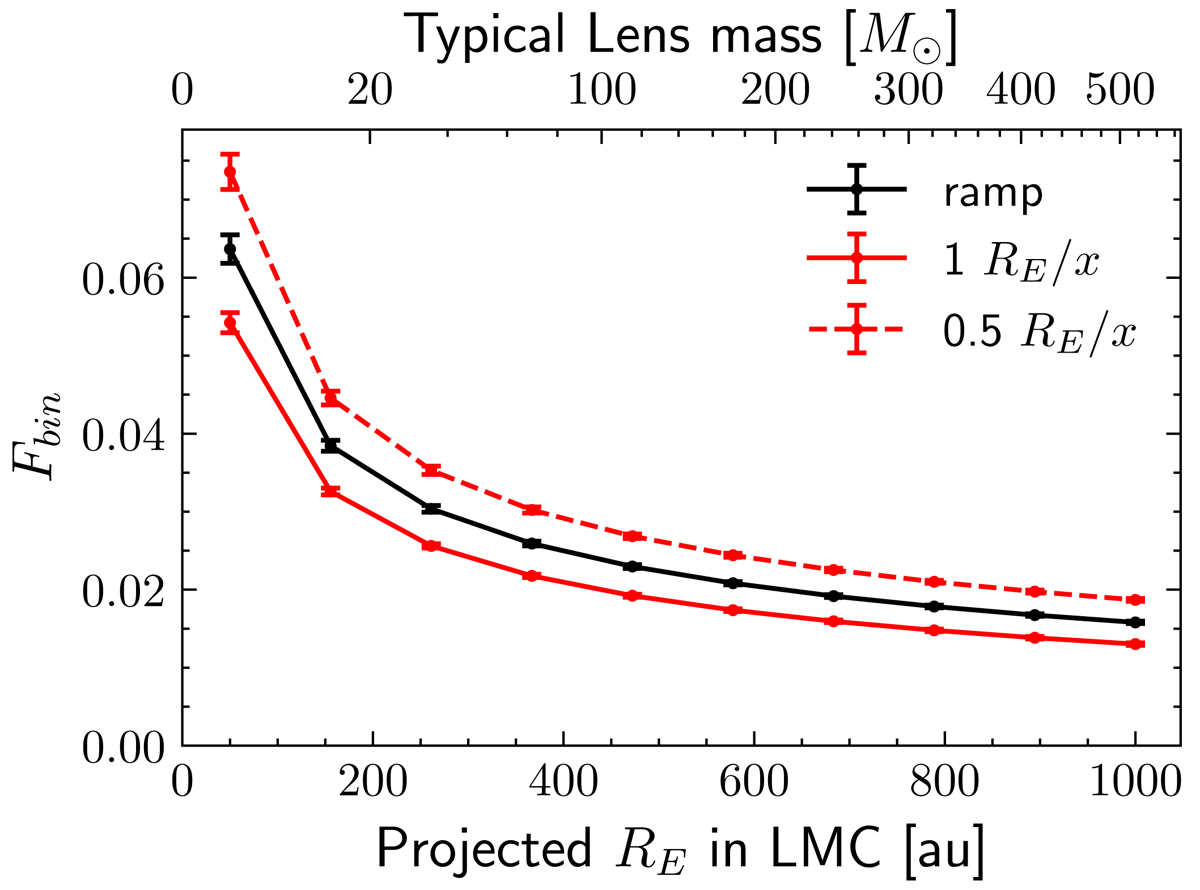Fig. 9.

Download original image
Rates of binarity Fbin as a function of the projected Einstein radius of the lens RE/x, obtained for different ways of integration: from a component separation larger than RE/x (solid red line), or larger than RE/2x (dashed red line), or by weighting contributions with a ramp function (black line) (see text). Typical masses corresponding to the Einstein radii are plotted on the upper abscissa for sources within the LMC. This rate is an upper limit to the risk of not detecting microlensing effects due to light-curve distortion induced by binarity of sources.
Current usage metrics show cumulative count of Article Views (full-text article views including HTML views, PDF and ePub downloads, according to the available data) and Abstracts Views on Vision4Press platform.
Data correspond to usage on the plateform after 2015. The current usage metrics is available 48-96 hours after online publication and is updated daily on week days.
Initial download of the metrics may take a while.


